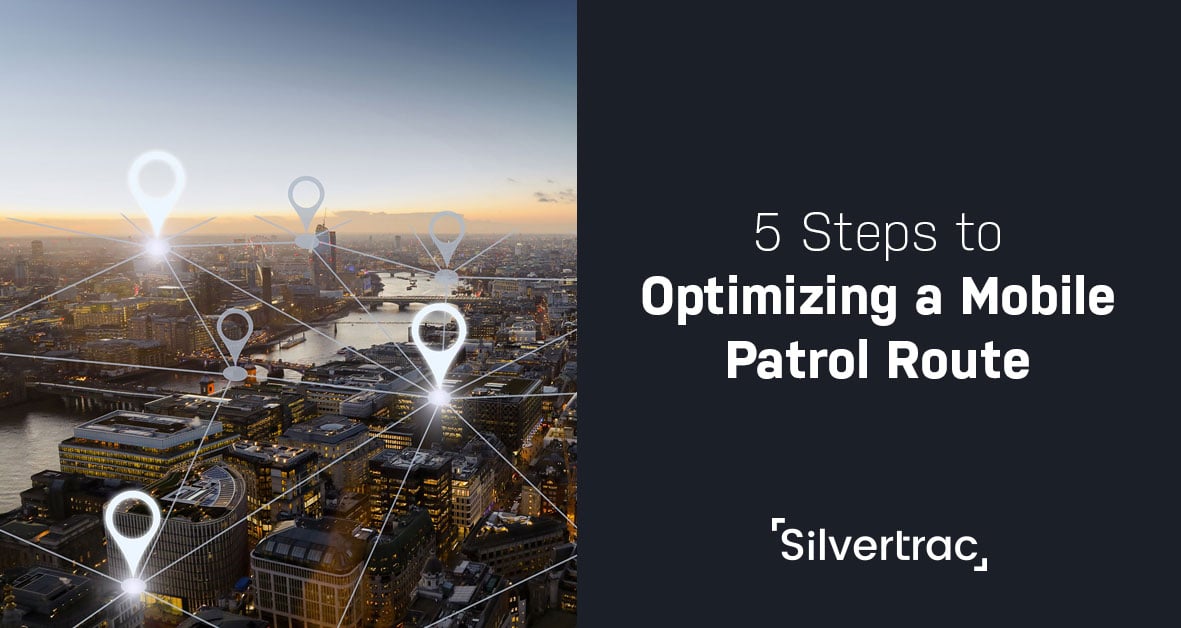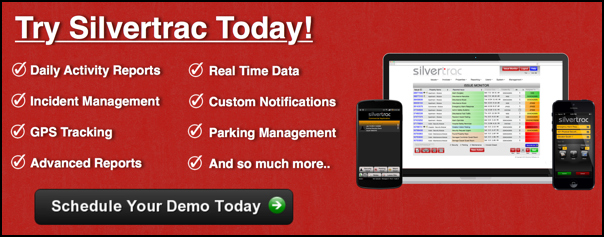The Silvertrac Extra
5 Essential Steps to Optimizing a Security Patrol Route

Mobile security patrol routes are a great way to win new business, but they can also become costly and unprofitable when managed poorly. The added costs and unpredictability of a security patrol are a challenge, but they can be managed by following a few, simple steps.
Step 1: Establish Client Expectations
To run an effective patrol route, you have to understand what the client wants from your officers, and why. It’s not enough just to know the different stops on the route, your guards need to know the reason the client wants them at each location.
In some locations, the client may just be looking for visibility to act as a deterrent. In other situations, the guard might need to arrive at a specific time to lock up a building or inspect some equipment. Understanding the priority and time-sensitiveness of each stop on the route will make it easier to build an efficient route that accomplishes all the necessary goals.
Step 2: Build And Optimize The Route
Now that you’ve established priorities and determined which stops on the route are time-sensitive and which are flexible, it’s time to build the actual route. Fortunately, there are plenty of tools online that can take over this job for you and build optimized, responsive routes for your officers.
One of our favorite apps is BestRoute. This free app integrates with Google maps and builds optimized routes for up to 30 stops. What’s more, it can react and update routes if unusual circumstances force your officer to deviate from the original plan.
“Let’s say he gets called and he needs to go to an alarm response in the middle of the route, it will adjust where he’s going to go next based on his current location,” said Johnny on today’s episode.
BestRoute is great, but it does have certain limitations. There are other paid options that are more robust, such as Route4Me, which is $50/month and is used by big logistics companies such as UPS.
Step 3: Manage & Minimize Costs
We’ve talked about the importance of managing costs on previous episodes. Using a cheap or leased model car can be just as effective and much more cost efficient than going out and buying a big fancy new car.
Doing Step 1 right and establishing customer expectations will be a big help in this step. The worst thing you can do is over-promise to customers and end up being forced to choose between losing money on a patrol or trying to carry it out with not enough resources and delivering poor service.
Our Security Patrol Cost Calculator can help you get a handle on expenses by measuring the actual cost per hit. In addition to factoring in the basics like guard wages, it takes into account things like:
- Insurance
- Workman’s comp
- Uniforms
- Equipment maintenance
- Gasoline
- Depreciation
It takes a little bit of time to put it all together, but at the end you’ll have an exact sense of your costs per each 15 minutes and what you’ll need to do to turn a profit.
Part of getting the most productivity out of routes is going beyond hits and selling your ability to solve problems rather than just show up at a location. Maybe a client wants you to hit a stop at the same time every day, but if you dig deeper into their real motivation you can come up with a solution to their problem that gives your officer more flexibility to squeeze that stop into different times in their route.
Step 4: Get The Route To Full Capacity
Once you’ve established a route and know your costs, you can build a wish list of accounts along the route that you can try to add so you can squeeze in more hits without adding much to expenses.
This is where it’s so important to have good communication between the operations manager and business development manager.
“Allowing what the business development managers can sell to dictat the stops you’re making is a great way to get the end of the month and find out that you weren’t profitable,” said Johnny.
If, instead, you target properties that can integrate easily into your existing routes, you’ll be able to deliver high-quality service to all your customers with relatively low costs.
Charles Gaines of First Security Systems explained his approach to optimizing Mobile Patrols in episode 4, The Keys to Success When Launching a Mobile Patrol.
Step 5: Repeat
This should be a regular process that you continue to run with your patrols. Patrol software systems such as Silvertrac can give you valuable information on the types of incidents and their frequency to let you know if you need to change up the route or add new stops. By digging deeper into the route causes of problems, you can go beyond hits and create highly efficient routes that solve real issues for clients rather than just have guards show up at random locations.





